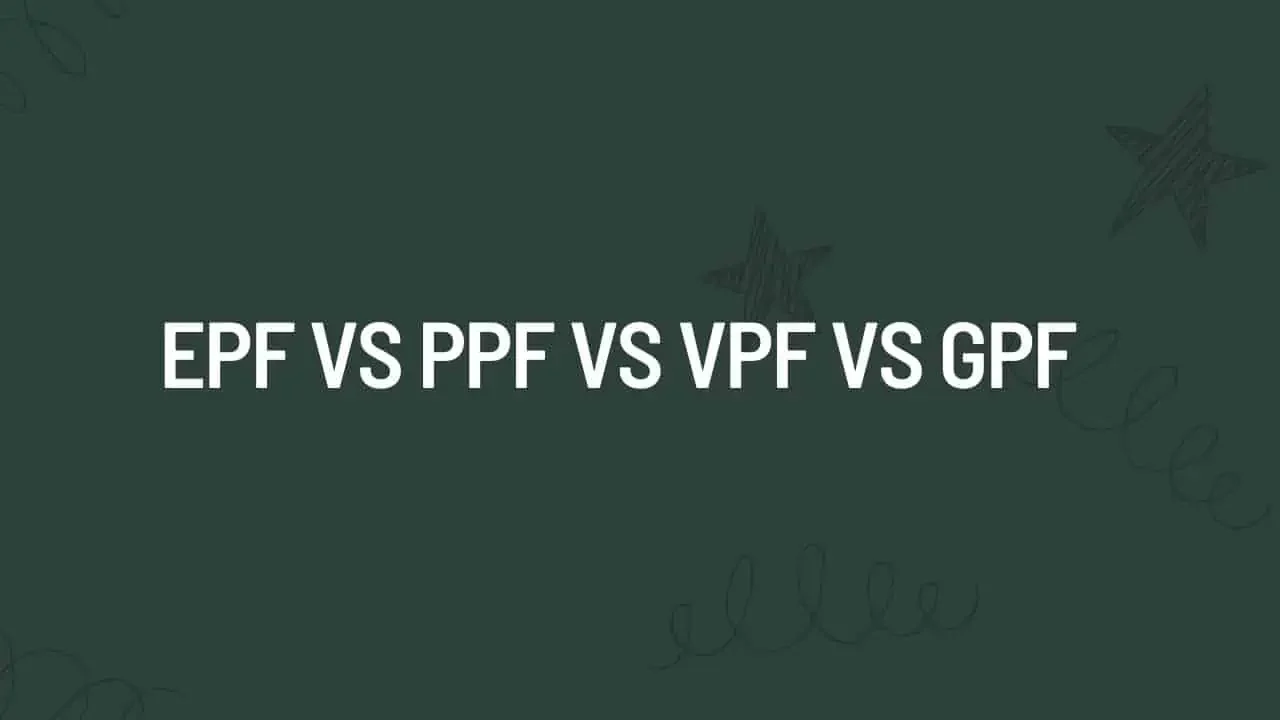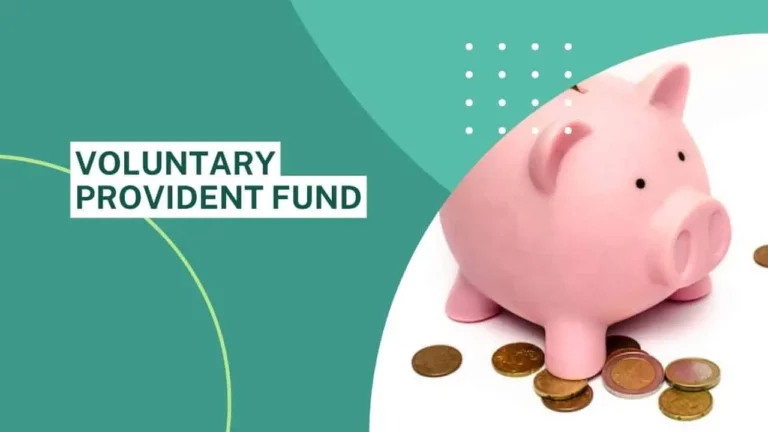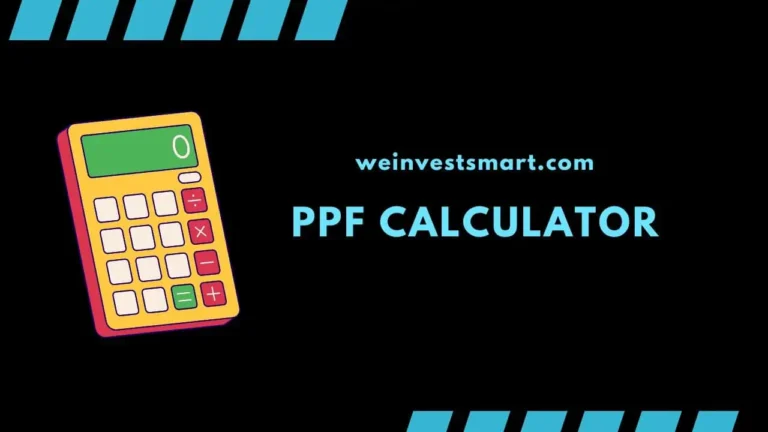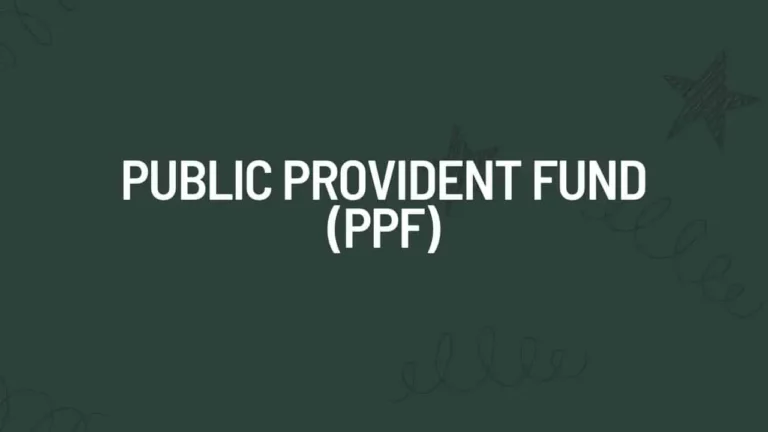EPF vs PPF vs VPF vs GPF: Interest Rates, Lock-In, and Understanding the Key Differences
When it comes to long-term savings and investment options in India, there are several popular schemes to choose from, including EPF, PPF, VPF, and GPF. Each scheme has its own features, advantages, and disadvantages, making it important to understand the differences between them and choose the one that best suits your investment goals.

A Provident Fund, or PF, is a safe and secure investment option that most Indians trust, especially middle-class employees. It provides excellent interest rates, and at the same time, it is very easy and convenient to invest.
In this article, we will compare and contrast EPF Vs PPF Vs VPF Vs GPF based on their eligibility criteria, interest rates, tax benefits, withdrawal rules, and other key features.
Consider using our Online PPF Calculator to calculate the returns on your PPF investment.
Page Contents
EPF vs PPF vs VPF vs GPF – What Are The Key Differences
| Factors | EPF | VPF | GPF | PPF |
|---|---|---|---|---|
| Kind of PF | Employee provident fund | Voluntary provident fund An extension of EPF. | General provident fund | Public provident fund |
| Account managed by | EPFO(Employees’ provident fund organization ) | EPFO(Employees’ provident fund organization ) | Department of Pension and Pensioner’s Welfare | Banks/Post office on behalf of Central Government |
| Eligibility | Any organization employing a minimum of 20 workers is liable to give EPF benefits to the workers. | salaried individuals who receive their monthly payments through a specific salary account and contribute to EPF. | Only Govt employees who are residents of India and only if they have joined before 1st Jan 1004 can invest in GPF | Any Indian age 18 or more can invest in PPF |
| Contribution Limits | Restricts to 12 % of basic salary | Allows more than 12 % maximum contribution is up to 100% of his Basic Salary | An employee contributes 6 % of the salary Government contributes 6% of the salary | Min of 500 and up to 1.5 lakh can be deposited in a financial year |
| Tax Benefit | Falls under EEE category (( EEE – exempt on contribution; exempt from the principal; exempt on interest) ) Exempted from tax calculation under Section 80C | The VPF falls under the EEE category | GPF is a EEE tax-free retirement-cum savings scheme. | The VPF falls under the EEE category |
| Loan facility | The employee should be in service for 5 years to be eligible to get a loan against PF | The employee should be in service for 5 years to be eligible to get a loan against PF | It can be availed at any time during the employment | Between the third and fifth financial year from the date of opening the PPF account, PPF loans can be availed against the account. |
| Lock in period | Can be closed while quitting the job permanently. Can be transferred while changing companies till retirement. The maturity amount is tax-free only on completion of 5 years. | same lock-in period as the EPF on resignation or within 2 months of unemployment. Partial withdrawal is allowed, but the withdrawal amount is tax-free only if the account is at least 5 years old | Can be closed while quitting the job permanently. Can be transferred while changing companies till retirement. | 15 years of the lock-in period. -duration can be extended by a block of 5 years -premature withdrawal allowed with certain conditions. |
| The interest rate in 2023 | 8.15 | 8.1 | 7.1 | 7.1 |
| Reliability | EPF account offers risk-free, guaranteed returns, and capital protection as it is backed by the Government of India. Therefore, opening a PPF account comes with minimal risks. | VPF account offers risk-free, guaranteed returns, and capital protection as it is backed by the Government of India. Therefore, opening a PPF account comes with minimal risks. | GPF account offers risk-free, guaranteed returns, and capital protection as it is backed by the Government of India. Therefore, opening a PPF account comes with minimal risks. | A Public provident fund / PPF account offers risk-free, guaranteed returns, and capital protection as it is backed by the Government of India. Therefore, opening a PPF account comes with minimal risks. |
From the above table, it is clear that if you are a working individual, then EPF / VPF is the best option for you considering the higher interest rate that you will receive in comparison to PPF. Also, EPF / VPF have an easier withdrawal option and transfer mechanism.
If you are not a working individual, then PPF is a great choice for you to secure a good interest rate with the peace of mind of having government security over your investments.
If you are a government employee, then you have the choice to invest in GPF, which is more or less similar to PPF.
Looking to save for retirement? Consider reading: National Pension Scheme (NPS)
What is the Employees Provident Fund (EPF)
The Employees’ Provident Fund (EPF) is an essential savings tool for salaried employees in organizations with over 20 workers. Managed by the Employees’ Provident Fund Organization (EPFO), under the Ministry of Labour and Employment, this scheme plays a crucial role in ensuring financial security for employees.
- EPF Contributions: Under EPF, both employer and employee contribute 12% of the employee’s basic salary plus dearness allowance to the EPF account monthly. Employees have the option to contribute above 12% voluntarily, known as the Voluntary Provident Fund (VPF).
- Interest Rates and Tax Benefits: The EPF account accrues interest at a rate determined quarterly by the EPFO. For the financial year 2023-24, the interest rate is 8.15% per annum. Interest earnings up to Rs. 2.5 lakh annually are tax-free under Section 80C of the Income Tax Act.
- Account Maturity and Withdrawals: The EPF account matures upon retirement or resignation. Post-retirement or after reaching 58 years of age, employees can withdraw the full balance. Partial withdrawals are permitted for specific reasons like medical emergencies, education, marriage, and home-related expenses, under certain conditions.
- Tax Implications on Withdrawal: Withdrawals are tax-free if the employee completes five years of continuous service. If not, the withdrawal amount is taxable as per the income tax slab of the employee.
What is Voluntary Provident Fund (VPF)
A Voluntary Provident Fund (VPF) is an advantageous savings option for salaried employees who wish to contribute more towards their retirement savings beyond the mandatory 12% Employees’ Provident Fund (EPF) contribution. Here’s an overview of VPF and its benefits:
- Higher Contribution Flexibility: VPF allows employees to voluntarily contribute up to 100% of their basic salary and dearness allowance into their EPF account. This flexibility enables employees to significantly increase their retirement savings.
- Interest Rates and Tax Benefits: VPF contributions earn interest at the same rate as the EPF, currently set at 8.15% per annum for the financial year 2023-24. Like EPF, the interest earned on VPF is tax-free up to Rs. 2.5 lakh annually under Section 80C of the Income Tax Act.
- Employer’s Role: Importantly, while employees can opt for higher VPF contributions, employers are not required to match these additional contributions.
- Maturity and Withdrawal Rules: VPF follows the same maturity and withdrawal guidelines as EPF. Employees can access these funds upon retirement or under specific circumstances as allowed for EPF withdrawals.
Consider reading: What is Voluntary Provident Fund and Latest interest rates
What is Public Provident Fund (PPF)
The Public Provident Fund (PPF) is a popular savings scheme in India, offering a blend of long-term investment, guaranteed returns, and attractive tax benefits. Managed by banks and post offices under the aegis of the Central Government, PPF is an ideal investment option for those looking for secure and beneficial savings. Here’s a breakdown of what PPF offers:
- Contribution Limits and Flexibility: PPF allows opening of only one account per individual. Investors can contribute a minimum of Rs. 500 and a maximum of Rs. 1.5 lakh per financial year, catering to a range of investment capabilities.
- Interest Rates and Tax Exemption: The scheme earns interest at a rate decided quarterly by the Central Government, currently at 7.1% per annum for the financial year 2023-24. The interest earned on PPF is entirely tax-free under Section 80C of the Income Tax Act.
- Maturity Period and Extensions: The PPF account comes with a 15-year lock-in period, offering a stable and long-term investment horizon. This period can be extended in blocks of five years, providing further investment continuity.
- Withdrawal and Loan Facilities: After six years from account opening, investors can withdraw up to 50% of the balance, tax-free. Additionally, loans against the PPF account can be availed between the third and fifth financial years.
Consider reading: What is PPF and Latest Interest Rate
What is General Provident Fund (GPF)
The General Provident Fund (GPF) is an essential savings scheme for government employees who commenced their service before January 1, 2004. Administered by the Department of Pension and Pensioners’ Welfare under the Ministry of Personnel, Public Grievances and Pensions, GPF plays a crucial role in securing the financial future of government employees. Here’s an overview of GPF:
- Contribution Mechanism: In GPF, both the employee and the government contribute 6% of the employee’s basic salary to the GPF account monthly, ensuring a substantial saving for post-retirement life.
- Interest Rates and Tax Benefits: The GPF account accrues interest at a rate set quarterly by the Central Government, with the current rate being 7.1% per annum for the financial year 2023-24. The interest earned is completely tax-free under Section 80C of the Income Tax Act, adding to its attractiveness as a savings scheme.
- Account Maturity: The maturity of the GPF account occurs at the time of the employee’s retirement or death, providing financial support during the post-retirement phase or to the employee’s family.
- Withdrawal Options: Post-retirement or upon reaching 60 years of age, employees can withdraw the entire GPF balance. Additionally, partial withdrawals from the GPF account are permitted for specific purposes like medical emergencies, education, marriage, or home-related expenses, under certain conditions. These withdrawals are also tax-free.
Consider reading: What is GPF and Latest Interest Rate
EPF vs VPF vs PPF vs GPF: Where to Invest?
Deciding where to invest among EPF, VPF, PPF, or GPF can be guided by your employment status, financial goals, and investment preferences. Each scheme has its unique features and benefits, tailored to different investor needs. Here’s a simplified guide to help you choose the right investment option:
- For Salaried Employees with EPF Benefits: If your employer offers EPF, contributing the mandatory 12% is a smart choice for availing high-interest rates and tax advantages. Consider opting for VPF for higher savings, enjoying the same interest rate as EPF. Keep in mind, VPF offers limited liquidity and has a long lock-in period.
- Self-Employed and Non-Salaried Individuals: PPF is an ideal investment option, offering guaranteed returns, tax benefits, and safety. It’s also a great choice for salaried employees seeking portfolio diversification and a distinct avenue for long-term savings.
- Government Employees (Pre-2004 Joining): GPF is your go-to investment, offering similar returns and tax benefits as PPF, with the added advantage of a government contribution. It’s also suitable for salaried individuals focusing on retirement planning.
FAQs on EPF vs PPF vs VPF vs GPF
Which is better GPF or EPF?
Choosing between GPF (General Provident Fund) and EPF (Employees Provident Fund) for retirement savings depends on your employment status. Salaried employees find EPF to be more beneficial due to its mandatory contribution feature and employer match, optimizing retirement savings. GPF suits government employees who prefer a tax-free savings option with no mandatory employer contribution.
Which is better VPF or EPF?
Choosing between VPF and EPF depends on individual financial goals. EPF is mandatory for eligible employees with dual contributions from employer and employee, offering a secure retirement saving. VPF, a voluntary extension of EPF, allows employees to invest more with the same interest rates, enhancing their retirement corpus. Assess your savings needs to determine which is better for you.
Is NPS better than VPF?
Choosing between NPS and VPF depends on your risk tolerance and investment horizon. NPS offers potentially higher returns with market-linked risks, suitable for long-term, risk-taking investors. Conversely, VPF is ideal for risk-averse individuals seeking stable, guaranteed returns. Evaluate your financial goals to determine the better option for your portfolio.
Can I have both GPF and PPF?
Yes, Indian citizens can have both the General Provident Fund (GPF) and Public Provident Fund (PPF) accounts simultaneously. Both can be maintained by eligible individuals to enhance their savings portfolio, and there are no regulatory prohibitions against holding accounts in each scheme.





